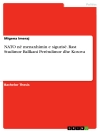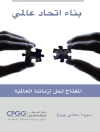State borders regulate cross-border mobility and determine peoples’ chances to travel, work, and study across the globe. This book looks at how global mobility is defined by borders in 2011 in comparison to the 1970s. The authors trace the transformation of OECD-state borders in recent decades and show how borders have become ever more selective.
表中的内容
Introduction Nation-State Building and the Regulation of Mobility Globalization and the Challenge of Mobility Visa Policies and the Regulation of Territorial Access The Spatial Flexibilization of Border Control Internationalization of Border Policies Varieties of Border Policies New Control and Selectivity Arrangements
关于作者
STEFFEN MAU Professor of Political Sociology and Comparative Social Research at the University of Bremen, Germany. He works in the fields of European integration, borders and mobility, comparative welfare research and social inequality. His recent publications include
Social Transnationalism Lifeworlds beyond the Nation State and
European Societies: Mapping Structure and Change (with Roland Verwiebe.)
HEIKE BRABANDT Research Associate at the Collobarative Centre on ‘Transformations of the State’ at the University of Bremen, Germany. She is interested in the diffusion of international norms and the role of the legal system. She has published on these issues as well as on gendered persecution, human rights and migration.
LENA LAUBE Research Associate at the Collaborative Research Centre on ‘Transformations of the State’ at Bremen University, Germany. She is interested in border and migration studies, global mobility regimes and social inequality.
CHRISTOF ROOS Ph D fellow at Bremen International Graduate School for Social Sciences and a research associate at the Collaborative Research Centre on ‘Transformations of the State’ at Bremen University, Germany. His main interest lies in EU integration and migration policy research.












